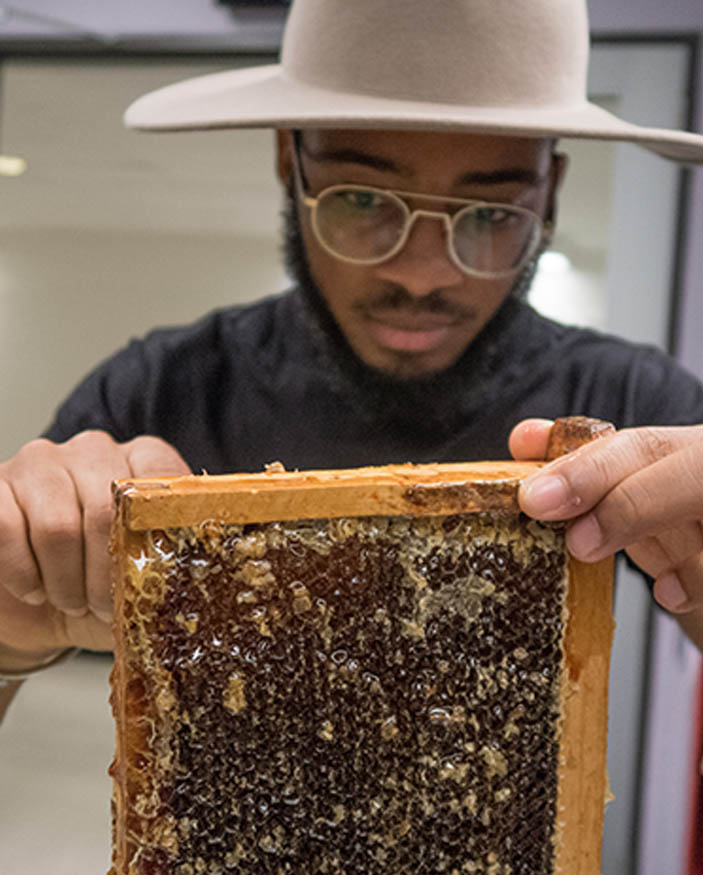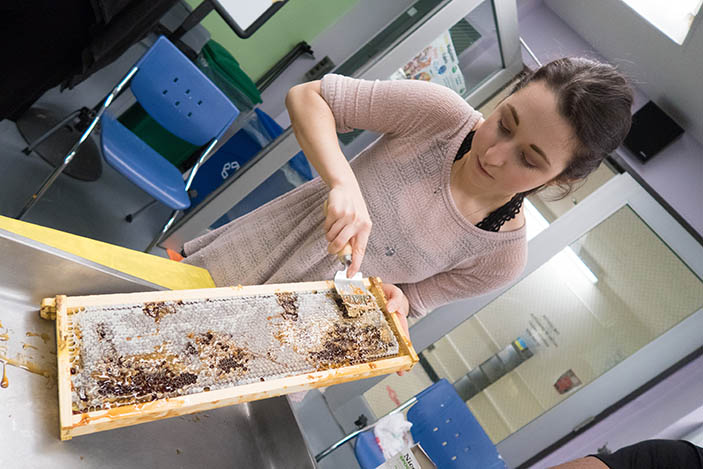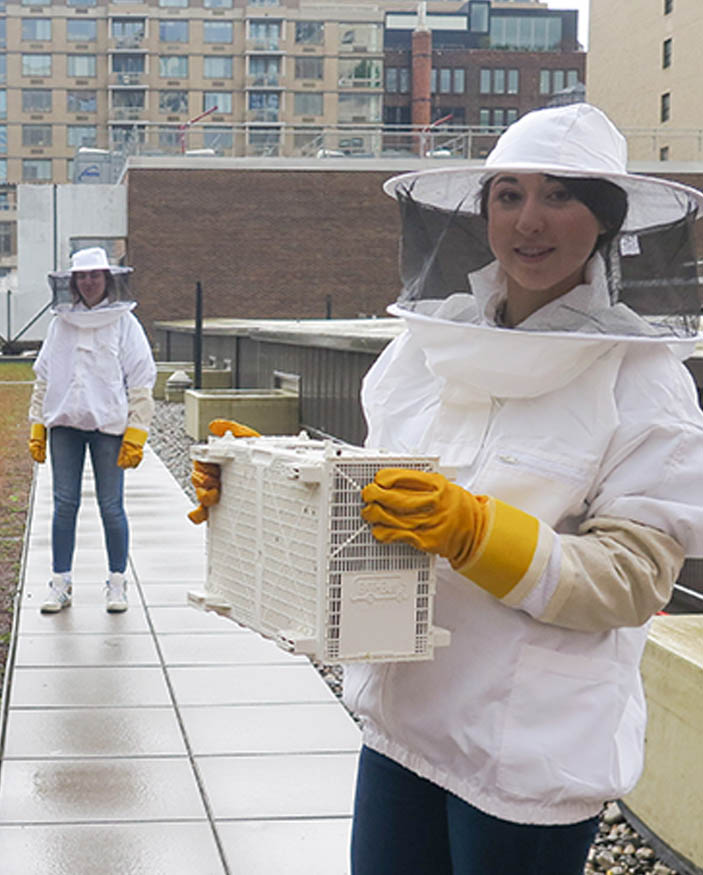More

Purpose/Impact
The primary goal of the bees project is to educate students about the the role of bees in the environment and in the fields FIT serves, and to contribute to the city’s bee population.
Also, beeswax, which bees produce to construct their hives, is useful in a variety of applications relevant to some of FIT’s majors. It can be used to make candles, in skin care products and cosmetics, and in encaustic painting (where heated beeswax is mixed with pigments to create paint).
The bees have thrived on FIT’s rooftop. Starting with a colony of 10,000, in the first year the bees’ numbers grew to 50,000. Part of the reason they are doing so well is that there is a lot of plant life in the vicinity. In addition to FIT’s green roofs and dye garden, the bees can feed on the High Line and in Madison Square Park, among other areas.
Outcomes/Accomplishments


Status Update
FIT’s hives have contributed to the honeybee population in the city, which, during a time when honeybee populations have experienced a dramatic decline, has become more important. The number of bees has increased by a factor of five since the inception of the project, and the bees have pollinated both FIT’s green roofs and natural dye garden. Additionally, in its first year, the hive produced 20 pounds of honey, which students harvested in the fall.



